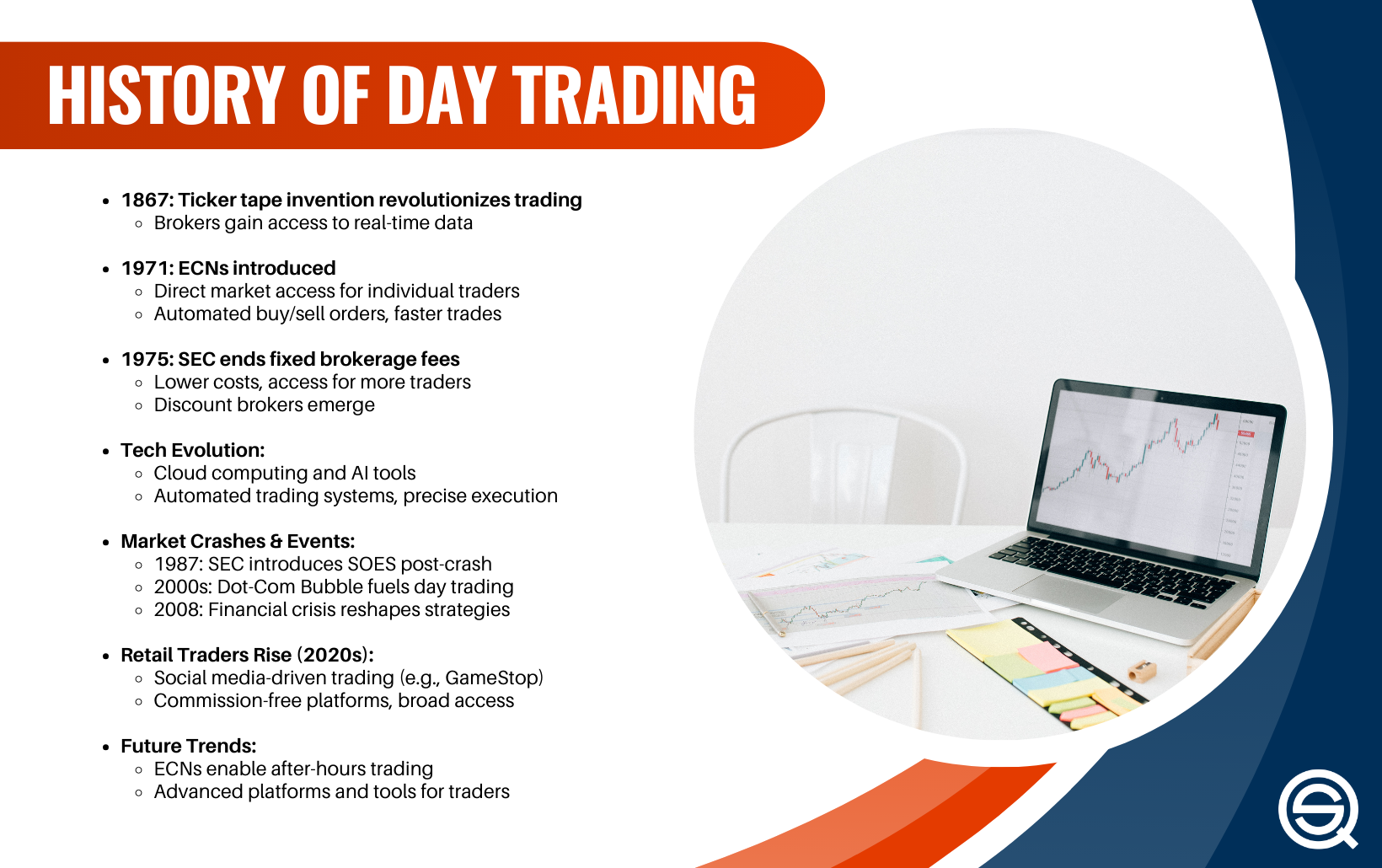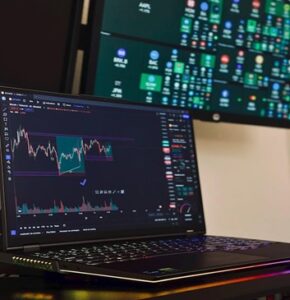Did you know that the first stock ticker tape was invented in 1867, and it was basically a fancy way of saying, "Hey, look at all these stock prices zoom by!" Fast forward to today, and traders have a plethora of advanced software options at their fingertips. In this article, we delve into the most popular day trading software, examining key features such as trade execution speed, reliability, and user-friendliness. We’ll guide you through choosing the best platform for your needs, highlight the top tools for real-time data, and discuss the costs associated with each option. Plus, we’ll explore the educational resources available and compare mobile apps to their desktop counterparts. With insights from DayTradingBusiness, you’ll be equipped to streamline your trading experience and maximize your potential.
What are the top day trading software options?
Thinkorswim by TD Ameritrade, TradeStation, NinjaTrader, MetaTrader 5, and eToro are top day trading software options. They offer real-time data, advanced charting, and fast execution. Each platform has unique features—Thinkorswim for analytics, TradeStation for customization, NinjaTrader for automation, MetaTrader 5 for forex trading, and eToro for social trading.
How do I choose the best day trading platform?
Look for platforms with real-time data, low commissions, and reliable execution. Prioritize user-friendly interfaces and robust charting tools. Check reviews for customer support quality and platform stability. Consider software compatibility with your devices and trading style. Test demos to see if the platform matches your needs before committing.
Which day trading software offers the fastest trade execution?
Thinkorswim by TD Ameritrade offers the fastest trade execution among day trading software, with lightning-fast order processing and minimal delays.
Are there free day trading tools with good features?
Yes, there are free day trading tools with solid features like TradingView for charting, Thinkorswim's paperMoney for virtual trading, and TradingView's social community for ideas. These tools offer real-time data, technical analysis, and practice accounts at no cost.
How reliable are popular day trading apps?
Popular day trading apps are generally reliable for executing trades but vary in features and stability. They often have real-time data, easy interfaces, and quick order execution, which are crucial for day traders. However, technical glitches, platform outages, or slow updates can happen, affecting reliability. User reviews highlight that some apps perform well during normal hours, while others struggle with high market volatility. Overall, their reliability depends on the platform’s infrastructure, user’s internet connection, and market conditions.
What features should I look for in day trading software?
Look for real-time data, fast order execution, customizable charts, technical analysis tools, and risk management features. Ensure it offers reliable connectivity, easy interface, and compatibility with your trading strategies. Good alert systems and paper trading options add value, while automation features can boost efficiency.
How does charting and analysis compare across platforms?
Charting and analysis features vary widely across platforms. Some, like TradingView, offer advanced, customizable chart tools and real-time data, making technical analysis easy. Others, like Robinhood, focus more on simplicity with basic charting, suitable for quick decisions. Thinkorswim provides detailed indicators, drawing tools, and backtesting options, ideal for serious traders. MetaTrader offers robust automated analysis and scripting. Overall, platforms differ in depth, customization, and ease of use, impacting how traders analyze markets daily.
Which platforms provide real-time data for day traders?

Platforms like Thinkorswim, TradingView, eToro, and Interactive Brokers offer real-time data for day traders.
What are the costs and fees associated with top trading software?

Top trading software costs range from free to several hundred dollars monthly, with most charging a subscription fee. Popular platforms like Thinkorswim and TradeStation often require a basic account, with premium features costing extra. Fees may include commissions per trade, spreads, or inactivity charges. Some software offers free trial periods or tiered pricing based on features or trading volume. Additional costs can include data feeds, premium tools, and advanced analytics.
How user-friendly are the best day trading programs?
The best day trading programs are highly user-friendly, with intuitive interfaces that make placing trades quick and simple. They often feature customizable dashboards, real-time data, and easy-to-understand tools, even for beginners. Many include step-by-step tutorials and customer support to help new traders navigate the platform. Overall, they streamline complex trading processes, making day trading accessible without overwhelming users.
Learn about How to Choose the Best Prop Firm for Day Trading
Do popular platforms support automated trading?
Yes, many popular trading platforms support automated trading through built-in algorithms or third-party integrations. Examples include MetaTrader 4 and 5, Thinkorswim, and NinjaTrader. These platforms allow users to create, test, and run automated trading strategies or use pre-made bots.
Which day trading software offers the best customer support?
Thinkorswim by TD Ameritrade is known for top-notch customer support, including 24/7 live chat and phone assistance. Interactive Brokers also offers excellent customer service with dedicated reps and quick response times. TradeStation provides responsive support through live chat, phone, and email. Overall, Thinkorswim’s support stands out for accessibility and reliability.
Learn about Best Free Day Trading Software Available
How secure are the most popular trading platforms?

Most popular trading platforms like MetaTrader, ThinkorSwim, and Interactive Brokers use robust encryption and security protocols, making them generally secure for users. They implement multi-factor authentication, regular security updates, and strict data protection measures. However, no platform is immune to cyber threats; user errors and phishing attacks can still compromise accounts. Always enable two-factor authentication, use strong passwords, and stay vigilant.
What are the limitations of free versus paid trading software?
Free trading software often lacks advanced analysis tools, real-time data, and customization options found in paid versions. It may have limited chart features, slower updates, and fewer integrations, reducing trading precision. Paid software offers more reliable, comprehensive data, advanced technical analysis, and automation, but costs can be high. Free tools can be enough for beginners but may restrict professional traders seeking speed and depth.
Which software offers the best educational resources for traders?
MetaTrader 4 and 5 offer the best educational resources for traders, including webinars, tutorials, and community forums. Thinkorswim by TD Ameritrade provides extensive learning tools, including in-depth courses and demo accounts. NinjaTrader offers detailed webinars, trading guides, and a supportive user community. TradingView combines powerful charting with a broad library of educational content and user insights.
How do reviews rate the overall performance of top platforms?
Reviews rate top trading platforms based on speed, reliability, user interface, and feature set. They highlight accuracy of data, order execution speed, and ease of use. Overall performance scores depend on how well the platform supports profitable trading and minimizes glitches. Users often praise platforms with intuitive design and robust tools, while criticism focuses on lag issues or limited features.
Are mobile trading apps as good as desktop versions?
Mobile trading apps are convenient but often lack the full functionality of desktop versions. They’re great for quick trades and monitoring markets on the go, but desktop platforms typically offer more advanced tools, customization, and stability. For serious day trading, desktop versions usually provide a better experience, though mobile apps are improving rapidly.
Conclusion about Reviews of Popular Day Trading Software
In conclusion, selecting the right day trading software hinges on understanding your specific needs, including trade execution speed, user-friendliness, and the availability of real-time data. While free tools can offer foundational features, paid options often provide enhanced capabilities and better educational resources. Ultimately, by evaluating the reliability, customer support, and security of various platforms, you can make an informed choice that aligns with your trading goals. For comprehensive insights and guidance on navigating these options, DayTradingBusiness is here to support your trading journey.
Learn about User Reviews of Popular Day Trading Brokers